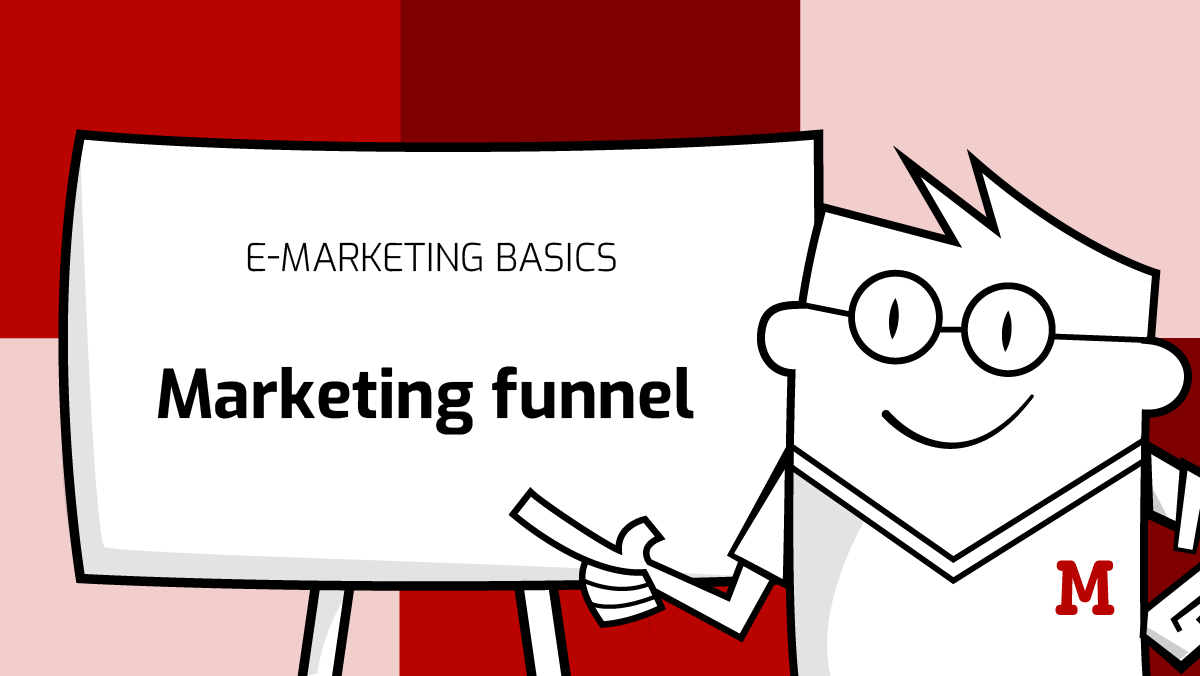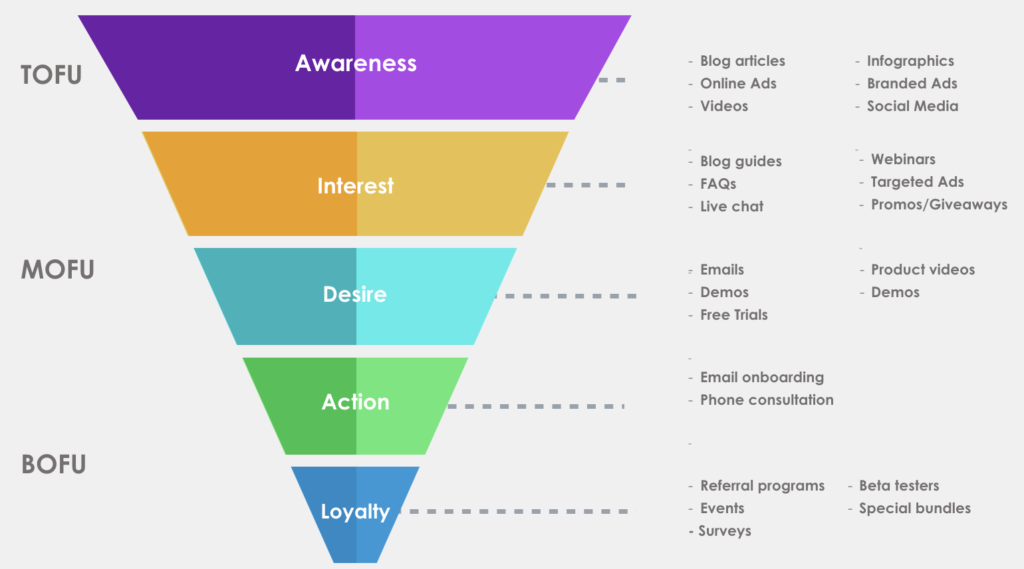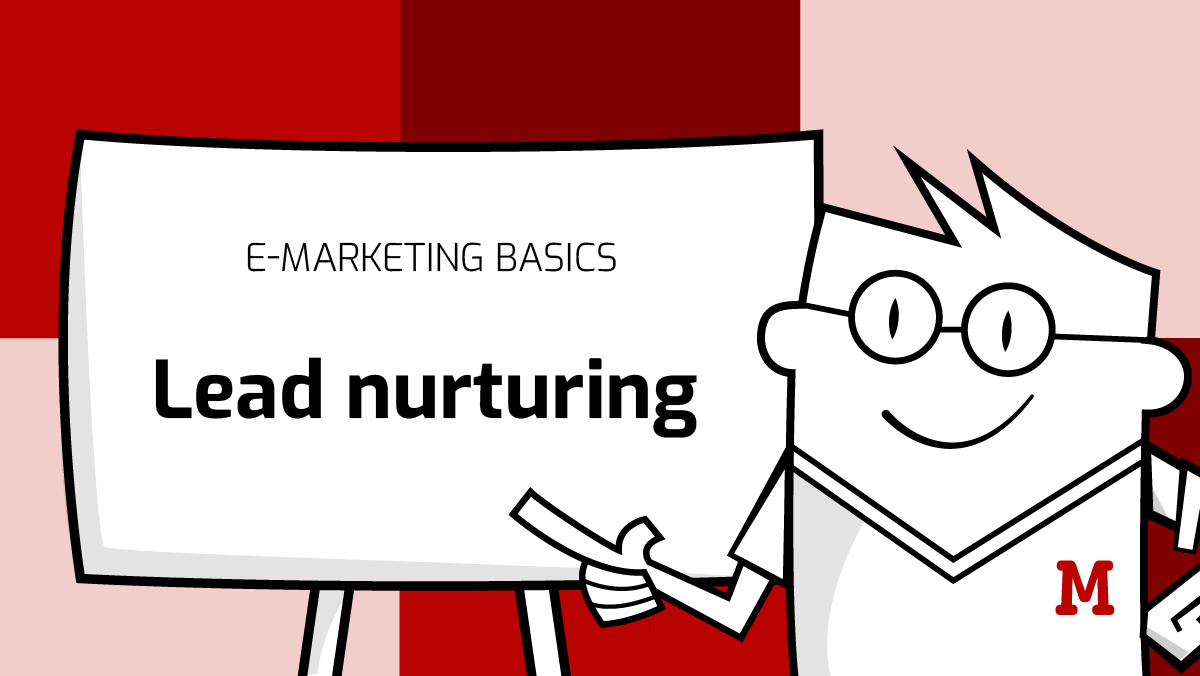Marketing funnel – what do you need to know about it?

The purchasing process can be pictured in many different ways. The most popular and versatile one uses a funnel to show how customers go from the awareness that the product exists to placing an order. A marketing funnel (frequently referred to as a sales funnel) is a common technique for showing your company’s purchasing process. This way, you can improve it and make the most of every stage of it. And that’s what we’re going to discuss today.
The purchasing process is seldom immediate. Usually, there is a whole way leading to it comprising many different stages. Each of these stages can have a vital influence on the final decision. That’s why companies that want to maximize their sales and increase the number of orders have to do two things:
- Depict the purchasing process along with all its stages
- Optimize all these stages to create a seamless and convenient purchasing process.
Why the funnel?
A funnel is a good representation of what happens during the purchasing process. At the top of the funnel, there’s always the most water. As the funnel goes down, the amount of water decreases, and finally, there’s just a fraction of what we had at the beginning flowing out of the end of the funnel. It’s the same story with clients. In the beginning, the potential target group can be vast. But at the end of the process, only a few people/companies will place an actual order. You can’t expect that everyone who knows about your product will buy it, right?
The sales funnel, in general, is divided into three major stages:
- TOFU (top of the funnel)
- MOFU (middle of the funnel)
- BOFU (bottom of the funnel)
Once you understand what happens at each of these three stages, you will be able to optimize your marketing and sales efforts. Let’s get right to it!
TOFU: What happens at the top of the funnel?
As we already told you, the top of the funnel is where the most water is. Your goal here is to broadcast your product far and wide so that as many people (B2C) or companies (B2B) know about it. You can’t expect anyone to go through your funnel if they don’t know about your product or are not interested in it. In the classic AIDA model, we focus on attention and interest.
This is where the first verification happens. Thanks to the TOFU stage, you can discern potential customers from the people who accidentally clicked the ad or visited the website. How can you do that? For instance, by analyzing their behavior on your website. If there is a group of people who bounce from your website (leave it without taking any action), you know they are not your target audience.
What are the common tools used in TOFU?
- Advertisements and commercials
- Blog posts and branded content
- Videos
- Social media
In fact, anything that can encourage people to find out more about your product can be considered a TOFU tool. In the B2B world, a strategy called lead generation also starts at the top of the funnel.
Suppose you use all that, and some people are interested in finding out more about your product or service. What’s next?
MOFU: It’s time to maintain interest and trigger action
The middle of the funnel is an extremely important stage. People who already are here are initially interested in buying something from you. But usually, they need more information or more reasons to buy. Your role is to give them just that. All your communication should be focused on showing the product at its best, explaining its benefits, and showing why it is better than the competition. At this point, it would be extremely helpful to know as much as possible about doubts and questions your potential customers have. Every single one of those questions and doubts should be addressed in the communication.
That’s why, at this stage, companies heavily invest in content marketing. You should concentrate on educational blog posts, how-to videos, e-books and white papers, webinars, newsletters, tests and comparisons, and even user-generated content. Dispelling doubts is your main job here.
You should also make sure that your customer service is impeccable (at the MOFU stage, people ask a lot of questions, be ready for that!). It is also vital to place well-thought-out CTAs on your website and in communication materials. Remember, you want to encourage your potential buyer to place an order.
In the AIDA model, MOFU is all about nurturing desire and triggering action.
BOFU: The order is placed! What’s next?
If you were successful at the TOFU and MOFU stages, at least some of your customers will go to the BOFU stage, which usually means placing an order. This doesn’t mean, though, that your job is done. It’s helpful to think of a placed order as an opportunity to start an all-new purchasing process. After all, many customers go back to the same store/company to buy more products, correct? That’s your endgame, too!
Make sure your post-purchase service is excellent. Distribute promo codes and vouchers, send captivating newsletters, and remind yourself from time to time with friendly push notifications. In general, you have to stay in touch with your customers. Content marketing also plays a vital role here. After all, there are many pieces of content that your customers may be interested in AFTER the purchase. We can mention here tutorials, product and maintenance guides, how-to videos, and many other ideas.
Plus, most likely, your offer changes from time to time. It’s always a good idea to inform customers about new products in your inventory, new services, and special promotions. You can also start a loyalty program to encourage customers to be a regular part of your marketing and sales activities.
And that’s how the marketing funnel looks:

The marketing funnel can be automated!
Once you discover how different stages of the marketing funnel are interconnected, you can introduce automation to streamline your efforts. For instance, if you see that a given customer has put a product in the cart but didn’t finish the process, you can send them a quick reminder in the form of a push notification. Such an action can happen automatically.
You can set marketing automation scenarios showing what should be done in response to a customer’s action (or lack of action). This way, you don’t have to track your potential customers manually and verify where they are in the funnel. It can happen automatically.
At iPresso, we offer marketing automation tools that help you manage and optimize your sales funnel. See our solutions (especially pipelines) and features to find out more.
Summary: How to succeed with the sales funnel
Sometimes, going through a sales funnel can take less than a day. Sometimes, usually in the B2B world, it takes weeks or even months. You have to be aware of that and know how people make decisions in your sector or industry. If you want to make the most of the purchasing process in your company, you have to make sure that every stage of the sales funnel is taken care of.
Analyze your sales funnel at least once in a while and think about what can be done better. If you can get feedback from your customers, that’s even better. Ask them what they’ve been satisfied and dissatisfied with. Maybe they needed some information or help that wasn’t a part of your funnel? Use that information to improve the way your funnel works and looks. That’s the best recipe for success.



